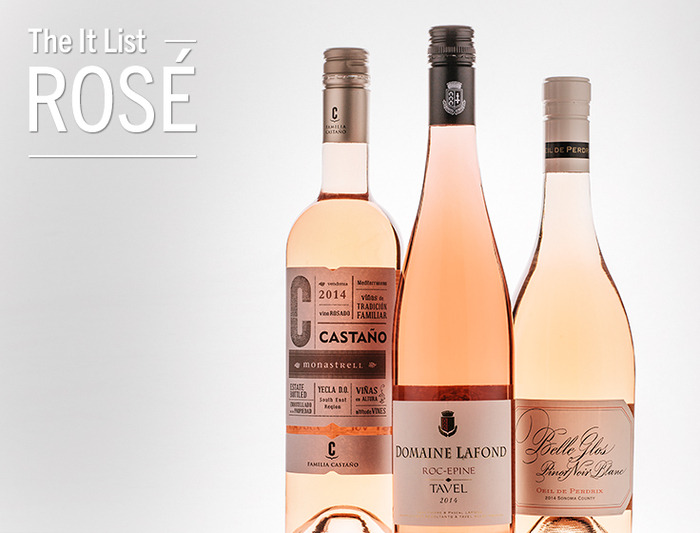All about rosé wine
Bill Belkin, category manager for our Wines & Spirits locations, clears up some of the mystery surrounding this popular pink wine.
Rosé may just be the Rodney Dangerfield of wines – the MOST misunderstood. How is it made? Is it a white Zinfandel? Is it dry or sweet? What grapes are used? What do I drink it with?
Let’s clear up a bit of the confusion and give some respect to this versatile and very on-trend wine!
First off, rosé is always made from red skinned grapes. Fun fact: All red skinned grapes (save a couple which we won’t go into now) have WHITE JUICE. Traditional Provençal rosés from France use Grenache and Syrah, along with lesser amounts of Mourvedre and Carignane. In America, especially in Oregon, Pinot Noir is the base for great Rosés. In California, Cabernet, Merlot and Zinfandel are all used. In Spain, rosato is made mostly from Garnacha (Grenache).
Rosé is made in three main ways. The first, called “skin contact,” is where the pressed dark grapes are in a tank, in contact with their darker skins, usually for 1-3 days. The resultant “must” (everything that is pressed out of the grape) is then pressed off the skins. The longer the contact, the darker the color.
If the pinkish juice is removed from the tank at an earlier stage, this is known in France as the “saignée” method, where the juice is “bled” off the skins and fermented separately to make the rosé. This method is also widely used in other countries – such as here in the U.S. – and makes fresh, fruit-driven, lighter
styles of rosé.
Lastly is the “blending” method. This method sees the introduction of red wine to a white to add color. This method is very seldom used. Except in Champagne, this method is actually banned in France.
Technically, white Zinfandel is a form of a rosé, as it starts life with dark black Zinfandel grapes. But in white Zinfandels, the final product is not fermented until 100% dry, so some residual sugar remains. However, most of the better rosé wines that we sell are DRY!
Here are some top rosé recommendations from our Golden Valley Wines & Spirits team:
Belle Glos Pinot Noir Blanc (Oregon) – Featuring crisp acidity, berry flavors and a touch of spice.
Castano Monastrell Rose (Spain) – Nicely balanced with hints of fresh strawberries.
Domaine Lafond Tavel (France) – A fuller bodied rosé with a darker color and aromas of strawberry, watermelon and spice.
Now for the good part: rosés are made to be drunk with anything! In the hot summer months, try a dry rosé with BBQ chicken, salad, appetizers – anything. There is not enough tannin and color to fight with many food pairings, making rosé pretty much the ideal wine.
And don’t put those rosés too far from reach when the weather turns cold – rosé with turkey at the Thanksgiving meal is inspirational!






